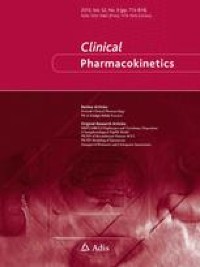Abstract
Background
Roxadustat is a novel, small-molecule, first-in-class therapeutic that stimulates erythropoiesis by inhibiting hypoxia-inducible factor prolyl hydroxylase enzymes. This agent (roxadustat) is in clinical development for the treatment of anemia in patients with non-dialysis-dependent (NDD) and dialysis-dependent (DD) chronic kidney disease. A population pharmacokinetic analysis was undertaken to evaluate the effect of intrinsic and extrinsic factors on roxadustat pharmacokinetics.
Methods
Non-linear mixed-effects models implemented in NONMEM software were fitted to 8209 pharmacokinetic samples from 2855 DD and NDD subjects enrolled in four phase III studies with roxadustat dose concentrations of 20–400 mg as orally administered tablets. Effects of intrinsic and extrinsic factors were evaluated using a stepwise covariate modeling procedure in combination with the full covariate approach, and defined no-effect boundaries for exposure were based on the difference in exposure between 70 and 100 mg of roxadustat (i.e., − 30%, + 43%).
Results
A two-compartment model with first-order absorption adequately described roxadustat pharmacokinetics, with parameter estimates (relative standard error) for apparent clearance of 1.1 (0.0223) L/h in NDD subjects, and apparent central and peripheral volumes of distribution of 14.9 (0.0278) L and 9.5 (0.0872) L, respectively. Stepwise covariate modeling identified bodyweight, dialysis status, race, and dose as statistically significant covariates on apparent clearance, and bodyweight, sex, and albumin as statistically significant covariates on apparent central volume of distribution. However, the effects of these covariates did not result in roxadustat area under the curve or maximum plasma concentration changes outside of the defined no-effect boundaries. The effects of concomitant oral iron, clopidogrel, and staggered sevelamer, calcium carbonate, or calcium acetate were investigated using a full covariate approach but did not result in roxadustat area under th e curve or maximum plasma concentration changes outside of the defined no-effect boundaries.
Conclusions
A population pharmacokinetic model was developed for the pharmacokinetics of roxadustat in the target population. None of the investigated intrinsic or extrinsic factors resulted in a significant change in roxadustat exposure outside of the defined no-effect boundaries.



No comments:
Post a Comment